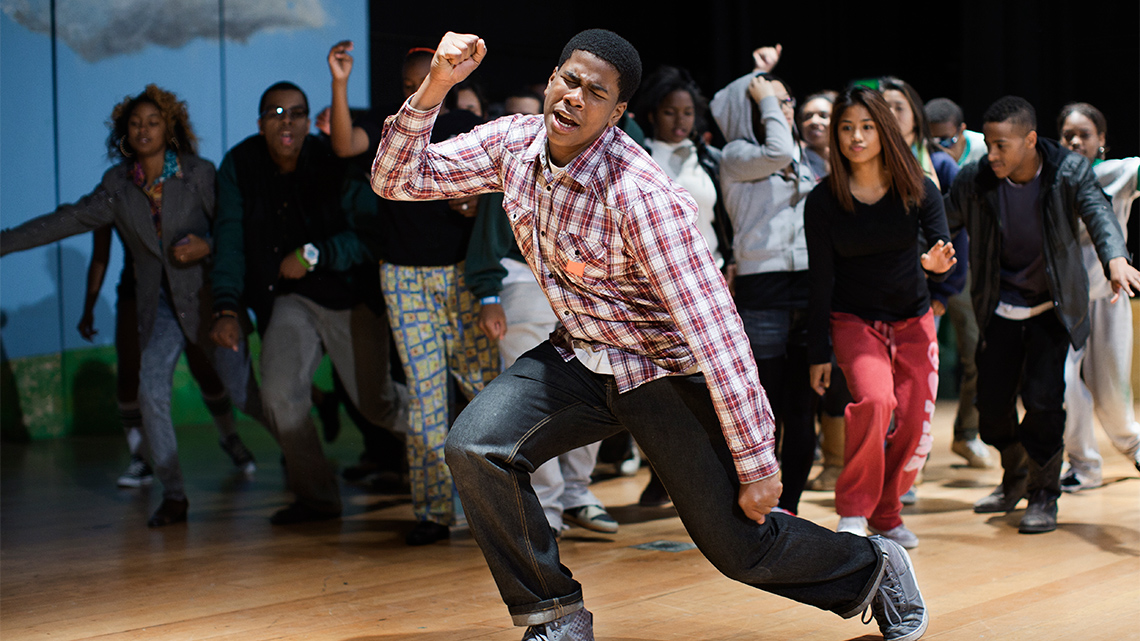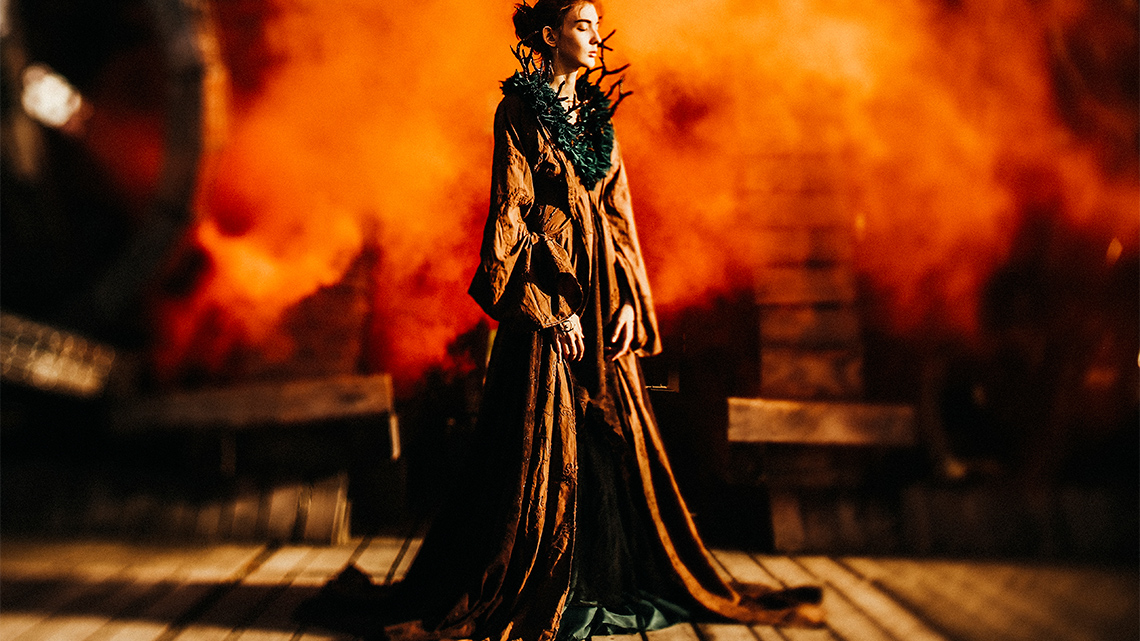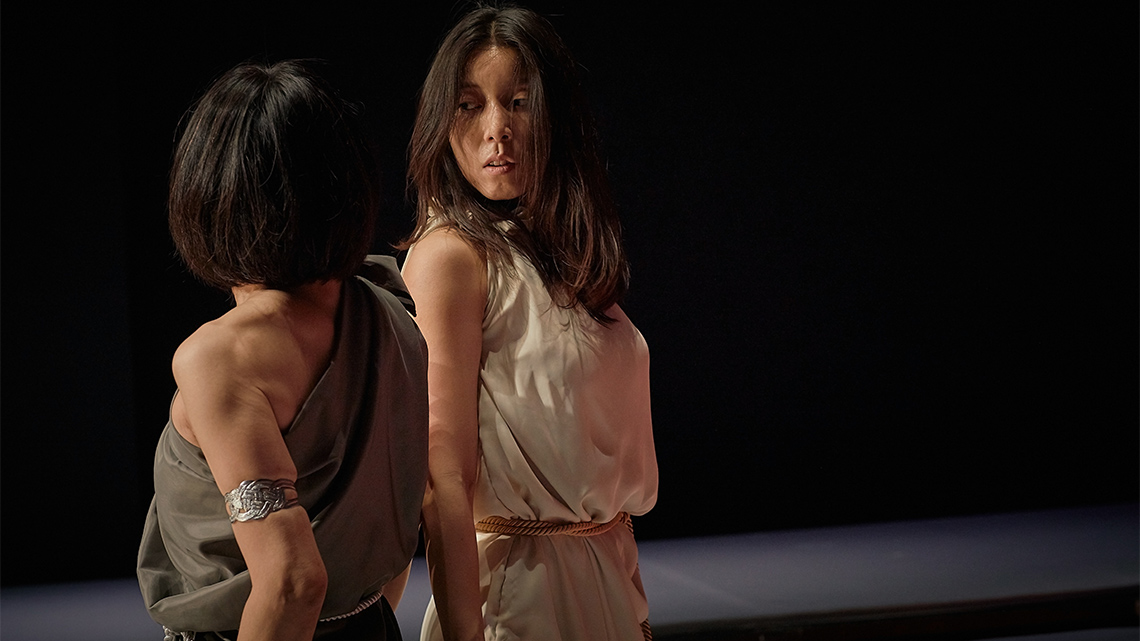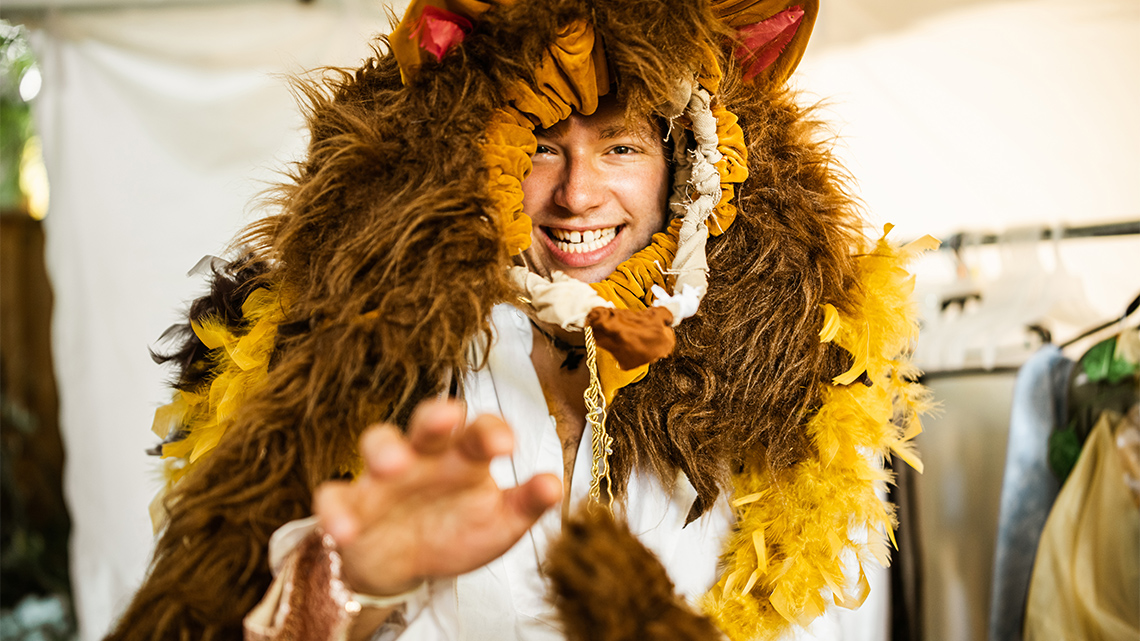Minds On
Warm up
Before you begin, don't forget to do your safety check!
Warm Up
Breathing exercise

Find a comfortable position. Focus your attention on one part of the body at a time.
How does that part of your body feel? If possible, take a deep breath and allow your lungs to expand.
Focus your attention on one part of your body. Allow that part to relax before moving on to the next. As you scan through your body, keep breathing deeply. Once you have completed the scan, take a moment to stretch.
If you wish, you can access this recording entitled “Deep Breathing” to complete your breathing activity.
Deep Breathing
Drama game
Environments
Explore the following video to learn how to play ‘Environments.’
Try It
Now, let’s try it!
Imagine being transported into a new environment.
For each example in the following carousel, consider:
- What kinds of equipment and clothing would someone need?
- What kinds of activities would someone do in the environment?
- Would the weather suddenly change? Would there be animals in the environment? People?
Act it out using gestures, movement, and/or facial expressions, narrate the experience to a partner, if possible, or create an audio or written description.
Let’s get started
What is drama?
Explain what you think drama might be based on the following carousel of images.
Record your ideas digitally, in writing, or as an audio recording.
If possible, share your thoughts with a partner.
Action
Get ready, get set…
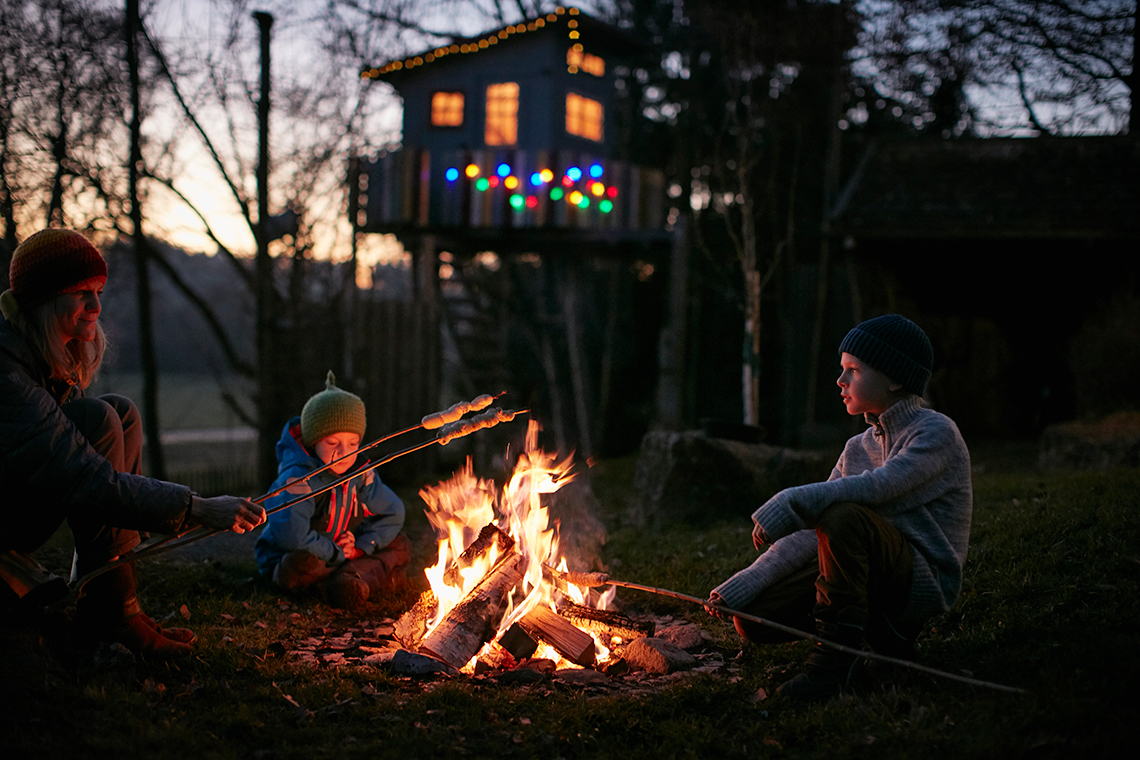
Ghost stories are a favourite to tell around a campfire.
Drama comes from the Greek words meaning “to do” or “to act.” Drama is about sharing stories, learning lessons, engaging in imaginary worlds, and exploring important ideas.
Drama is based in the tradition of storytelling. Communities have been engaging in storytelling for centuries. It is part of the oral tradition.
Press ‘Definition’ to access a definition of storytelling.
Storytelling is the practice of sharing stories to pass knowledge from generation to generation. Elders and Knowledge Keepers from Indigenous communities play an important role in preserving and passing on their histories, traditions, teachings, and knowledge from one generation to the next. Each nation has its own story about how the world and its people, clans, governance, traditions, and more were created. These are not “myths” or “legends,” rather they are called creation stories. Some stories are only told to particular people or in particular settings. Furthermore, some stories are protected and are only told within the community.
In the classroom, drama might be performed as process drama.
Press ‘Definition’ to access a definition of process drama.
Process drama might begin with a specific task, prompt, or scenario. The teacher and students create an imaginary world and spontaneously address challenges and develop relationships using dramatic improvisation. There is no script in process drama.
Drama might take place in a theatre and be performed onstage for an audience. This is called a drama production.
A drama production might include:
- a script which tells a story
- puppets and puppeteers
- masks, makeup, and costumes
- props and a backdrop
- music and sound effects
- a crew who works together to create different parts of the production
- songs that the actors sing
Acting in drama
Body, face, voice

Let’s now focus on the tools actors use in their drama work. When a student is using process drama to explore a scenario, they might use specific tools to help them connect with their peers.
When an actor is in role as a character onstage, they might use specific tools to help them connect with their audience.
These tools include using body gestures and movement, facial expressions, and/or vocal effects to create connections.
Press the following tabs to explore these different tools.
The first tool is using their body movements or gestures.
Access this video to explore an example of using body movements as an acting tool.
An actor can move their body to share different actions and different types of emotions.
If the character is happy, the actor might walk quickly with their head up.

For example, if the character is sad, the actor might walk slowly with their head down.

Another way that an actor can use their body is through gestures. A gesture is when a person moves their body to express an idea.
For example, someone might move their hands or head to show that they are excited.

The second tool an actor can use is facial expressions.
Access this video to explore an example of using facial expressions as an acting tool.
An actor can use their facial expressions to show meaning and emotion. Actors might:
- smile
- frown
- open their mouth and eyes wide
- raise their eyebrows
- stick out their tongue
- scrunch their face
The third tool an actor can use is their voice.
The following three videos explore voice as an acting tool. Check out the followings videos to explore examples of using voice as an acting tool.
Voice is another way that an actor can share meaning and emotion.
If the character is speaking to another character who is far away, the actor might want to shout.
Or if the character is in a library, the actor would want to whisper.
Tone
Another way that actors use their voice is by using tone. Tone is a specific way of speaking that shares an emotion. For example, if an actor spoke in an angry tone, that would mean that the character is angry.
Explore this audio clip entitled “Tone of Voice” to learn more about how our tone of voice can change the meaning of what we say.
Tone of Voice
Go!
Actors will combine using their body, face, and voice together to create an amazing character.
Explore the following video to learn more about how an actor might use their body, face, and voice.
What were your main takeaways from the video?
The art of clowning
Let’s explore the following video on the “Art of Clowning.” Note: In this video, the performer creates a character by pretending. They use different props to help them create their character (i.e. foam hammer). The purpose of this type of drama is to create funny scenarios to amuse the audience. Does the performer’s act amuse you?
List different ways in which the actor uses their body, their face, and their voice. Consider the specific quality of their movement (e.g., exaggerated or realistic).
Complete the Art of Clowning in your notebook or using the following fillable and printable document. If you would like, you can use speech-to-text or audio recording tools to record your thoughts. Consider adding your work to your drama portfolio.
|
Example |
|
|---|---|
|
Body |
|
|
Face |
|
|
Voice |
Press the ‘Activity’ button to access Art of Clowning.
When you have completed your Art of Clowning chart, check your work.
Press ‘Hint’ to explore possible ideas to consider.
|
Example |
|
|---|---|
|
Body |
The actor exaggerates their movements. For example, they use fluid, slow motion movements when they fall. |
|
Face |
The actor: frowns smiles opens their eyes wide |
|
Voice |
The actor says “ay-ay-ay” at different times in the performance. They also chuckle at different times in the performance, but otherwise they do not use their voice. |
Pause and Reflect
Pause and reflect
How did this drama performance make you feel? What did you learn about the character?
Record your responses using a method of your choice.
Consolidation
Putting it all together
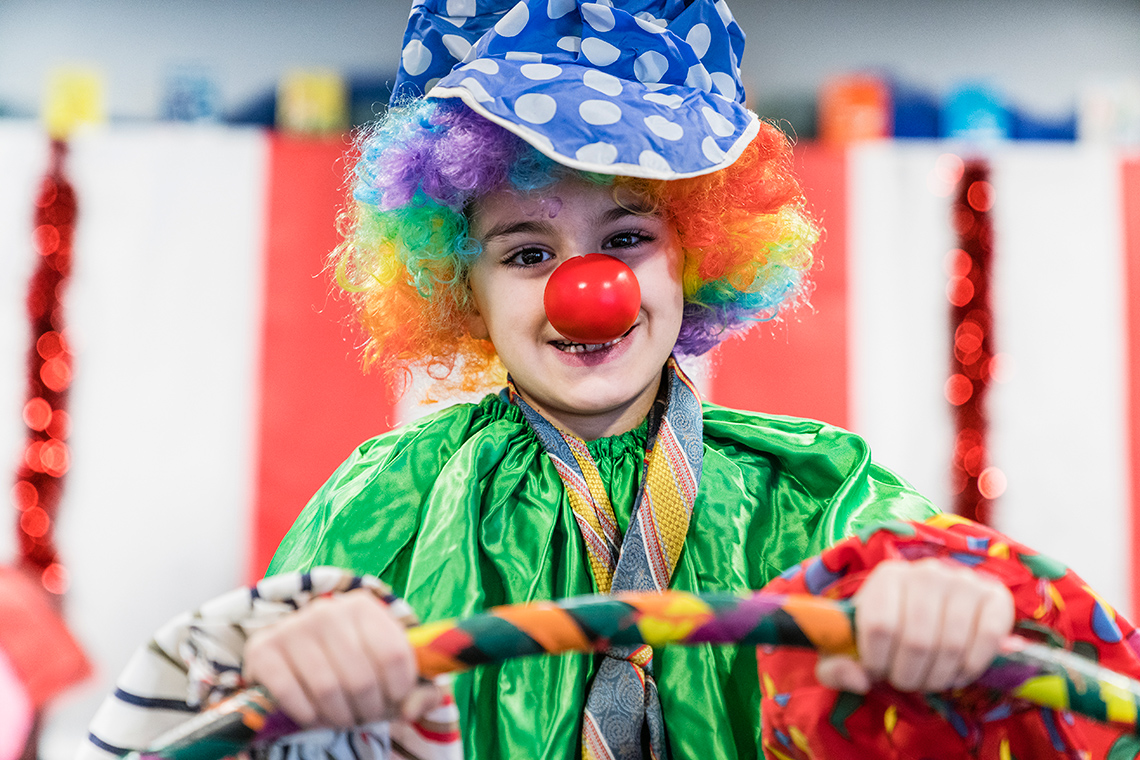
Explore the following drama production. You may also pick a TV show, movie, in-person performance, or an online production of your choice.
List the ways in which the actors use their body, face, and voice to connect with the audience. You may use the chart below or create an audio recording of your observations. Be sure to also complete the reflection questions at the end of the document.
Complete the Actors Tool Chart in your notebook or using the following fillable and printable document. If you would like, you can use speech-to-text or audio recording tools to record your thoughts. Consider adding your work to your drama portfolio.
|
Characters |
Example |
|---|---|
|
Body |
|
|
Face |
|
|
Voice |
Reflection Questions
|
Do you think they were effective? |
|
Did you enjoy the performance? Why or why not? |
Press the ‘Activity’ button to access Actors Tool Chart.
Portfolio
Reflection questions
Consider adding your answers to the reflection questions to your portfolio.
- What else might the actors do in a future performance to connect with the audience?
- How might you use body, face, and/or voice in your drama work?
- Would you use different tools for different activities or characters? If so, why?
Record your response using a method of your choice.
Reflection
As you read through these descriptions, which sentence best describes how you are feeling about your understanding of this learning activity? Press the button that is beside this sentence.
I feel...
Now, record your ideas using a voice recorder, speech-to-text, or writing tool.






